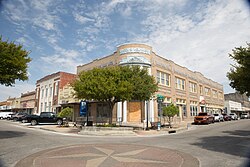
Yoakum County is a county located in the far western portion of the U.S. state of Texas. As of the 2020 census, the population was 7,694. Its county seat is Plains. The county was created in 1876 and later organized in 1907. It is named for Henderson King Yoakum, a Texas historian.
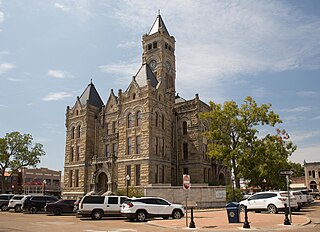
Lavaca County is a county located in the U.S. state of Texas. As of the 2020 census, its population was 20,337. Its county seat is Hallettsville. The county was created in 1846. It is named for the Lavaca River, which curves its way southeast through Moulton and Hallettsville before reaching the coast at Matagorda Bay.

Diboll is a city in Angelina County, Texas, United States. The population was 4,457 at the 2020 census. Diboll is named for J. C. Diboll, a local timber salesman.

Luling is a city in Caldwell and Guadalupe counties, Texas, United States, along the San Marcos River. The population as of the 2020 census was 5,599.

Point Comfort is a city in Calhoun County, Texas, United States. It is a part of the Victoria, Texas Metropolitan Statistical Area. The population was 603 at the 2020 census.

Port Lavaca is a city in Calhoun County, located in the U.S. state of Texas. The population was 12,248 at the 2010 census and 11,557 at the 2020 census. It is the county seat of Calhoun County and part of the Port Lavaca, Texas micropolitan statistical area. Port Lavaca is 130 miles (210 km) southwest of Houston.
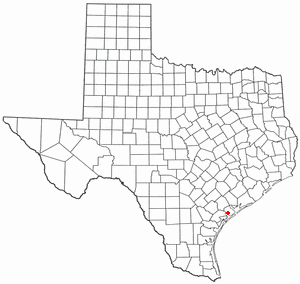
Seadrift is a city in Calhoun County, Texas, United States. The population was 995 at the 2020 census. It is a part of the Victoria, Texas Metropolitan Statistical Area.

Rusk is a city in and the county seat of Cherokee County, Texas, United States. At the 2020 United States census, it had a population of 5,285.

Paducah is a town in Cottle County, Texas, United States. The population was 1,063 at the 2020 census, down from 1,186 in 2010. It is the county seat of Cottle County. It is just south of the Texas Panhandle and east of the Llano Estacado.

Fairfield is a city and county seat of Freestone County, Texas, United States. The population was 2,850 at the 2020 census, down from 3,094 at the 2000 census. It was founded in 1851.

Dilley is a town in Frio County, Texas, United States. The population was 3,274 at the 2020 census. It is located off Interstate 35, south of the county seat in Pearsall.

Hale Center is a city in Hale County, Texas. The population was 2,062 at the 2020 census, down from 2,252 in 2010.

Haskell is a city in central Haskell County, Texas, United States. As of the 2020 census, the city population was 3,089. It is the Haskell county seat.

Malakoff is a city in Henderson County, Texas, United States. The population was 2,179 at the 2020 census. The city is named after a Russian fort of Malakoff, which played a pivotal role during the siege of Sevastopol during the Crimean War.
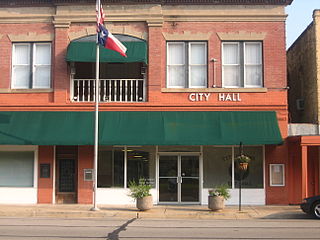
Edna is a city and the county seat of Jackson County, Texas, United States. The population was 5,499 at the 2010 census and 5,987 at the 2020 census.

Hallettsville is a city in Lavaca County, Texas, United States. Its population was 2,731 at the 2020 census. It is the county seat of Lavaca County. Hallettsville also has a sizable German-Texan population, as the town founders were mainly German and Czech immigrants.

Natalia is a city in Medina County, Texas, United States. The population was 1,202 at the 2020 census. It was founded in 1912 and was named after Natalie Pearson Nicholson, daughter of Frederick Stark Pearson, engineer, designer and builder of the Medina Dam.

Granger is a city in Williamson County, Texas, United States. It was incorporated in 1891. The population was 1,183 at the 2020 census.

Plains is a town in and the county seat of Yoakum County of western Texas, United States. The city's population was 1,355 at the 2020 census. Yoakum County is in the Texas High Plains Wine country.
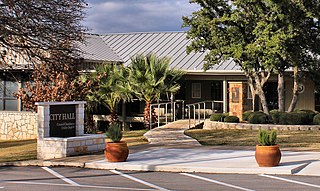
Horseshoe Bay is a city in Llano and Burnet counties in the U.S. state of Texas.
